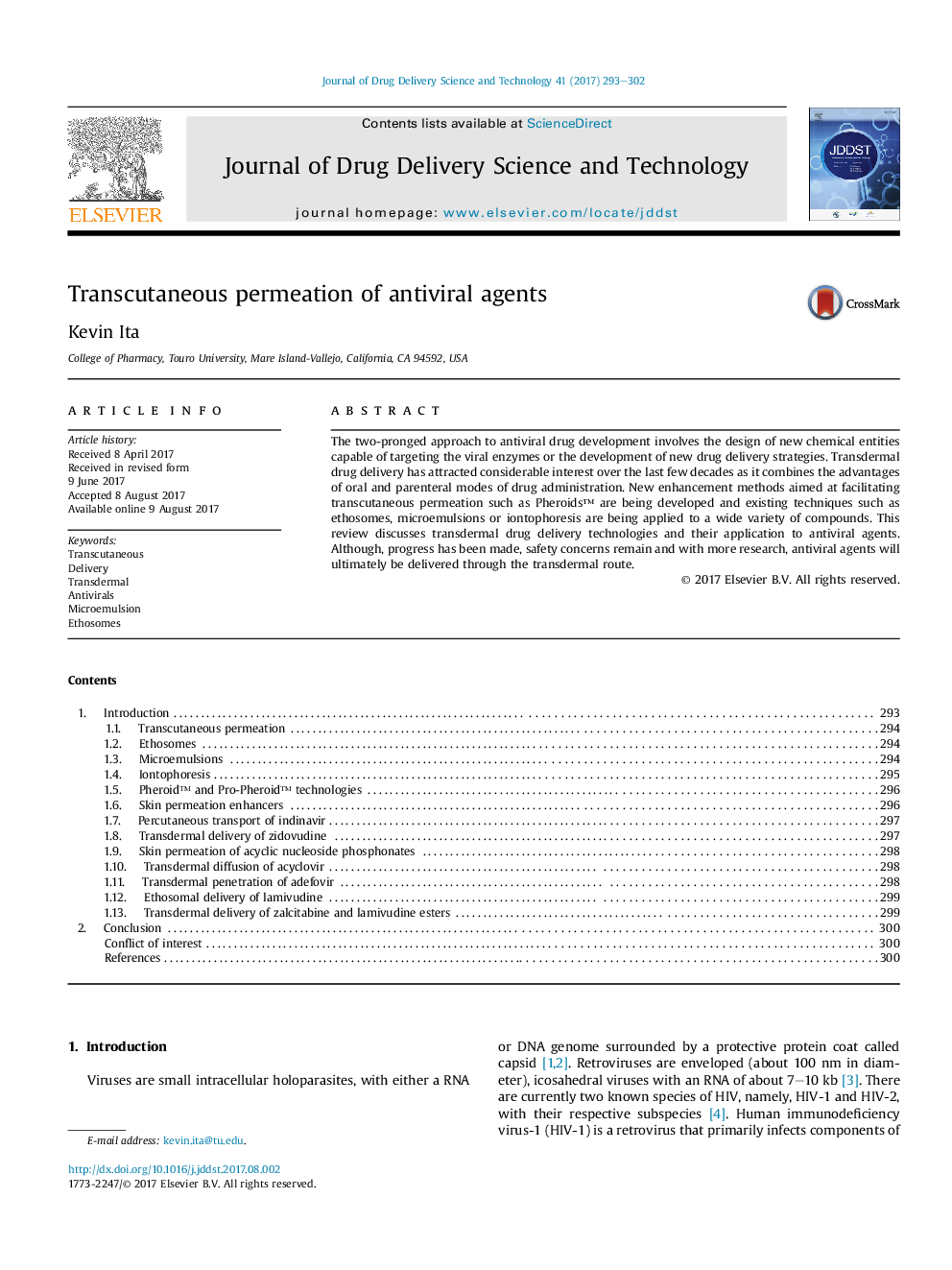| Article ID | Journal | Published Year | Pages | File Type |
|---|---|---|---|---|
| 5548058 | Journal of Drug Delivery Science and Technology | 2017 | 10 Pages |
The two-pronged approach to antiviral drug development involves the design of new chemical entities capable of targeting the viral enzymes or the development of new drug delivery strategies. Transdermal drug delivery has attracted considerable interest over the last few decades as it combines the advantages of oral and parenteral modes of drug administration. New enhancement methods aimed at facilitating transcutaneous permeation such as Pheroids⢠are being developed and existing techniques such as ethosomes, microemulsions or iontophoresis are being applied to a wide variety of compounds. This review discusses transdermal drug delivery technologies and their application to antiviral agents. Although, progress has been made, safety concerns remain and with more research, antiviral agents will ultimately be delivered through the transdermal route.
Graphical abstractSchematic representation of the three most commonly encountered microemulsion microstructures: (a) oil-in-water, (b) bicontinuous, and (c) water-in-oil microemulsion (reproduced with permission from Ref. [29]).Download high-res image (100KB)Download full-size image
